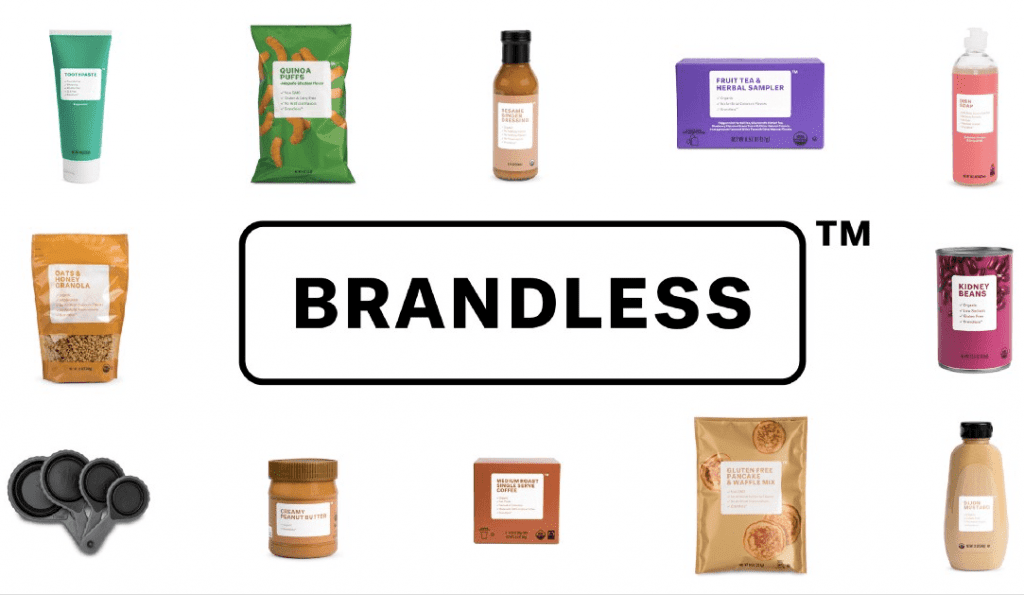
Future perspectives: the non-branded branding paradox
In order to stay up to date and get you inspired by what might be, we at Skyne share our future perspectives and signals of change on a monthly basis.
A blog written by Ingeborg Bruinewoud, Trend Strategist at Skyne.
Let’s start with a region-appropriate comparison; ever heard of the concept of a ‘fata morgana’? An optical illusion created due to hot air thermics. Something you think is actually there in the distance, but once you come closer, it vanishes. It was never there to begin with.
I would like to compare a fata morgana with the current practice of branding and marketing. It seems that some agencies are building their (brand) stories mainly on aspects that actually aren’t there. Sometimes this leaves customers disappointed after discovering that the brand promise mainly was a good made-up story without any tangible foundation.
It is this brand-promise not being in line with brand-proof we would like to focus on. An interesting approach agencies turn to now, in order to break through the brand promise/brand proof incongruity is ‘brandless branding’. Logo’s and brand stories are being skipped entirely. With all current developments and mentality changes, the question is whether this will be the right way to customer’s hearts.
Authenticity
‘We keep longing for real stories, stories we can verify and stories we (love to) believe’. Earlier we wrote about our need for a real human touch in our ‘trends for 2018 update’. Thanks to ‘growing transparency’ real stories became an important need for many people the last couple of years. Agencies focussed on the use of authenticity. Unfortunately this resulted in the degradation of ‘Authenticity’ to an empty shell.
Once authenticity became a tool for marketeers and branding specialists as an easy win-over for big target groups, it eventually lost all its meaning. It is a bit of a chicken and egg situation; are you creating a nice authentic story around your product and brand, or telling the nice authentic story of your product or brand? It is especially the first option people really start to be able to pierce through. True intentions on the other hand, could be the main predictor for success.
Brand-less branding
Then there was the rise of brandless branding. In 1997, 2015, and this year again, presented as the newest state-of-the-art approach to build a future proof brand. The approach is quite simple: strip the brand to its bare essentials, get rid of the logo, tagline and storytelling. Add a powerful statement about how brands are overrated, and you’re done!
The name and non-existent logo of the online groceries shop Brandless give away the main mission of the brand; ‘Better stuff, fewer dollars. We’re here to eliminate the BrandTax once and for all.’ Brandless is trying to emphasize the products it sells rather than the brand itself. With neatly designed packaging and an interesting ‘everything is $3, everything is of good quality, and we’re there for you’ positioning they really offer a ‘nonsense-filter’ for the American online shopper, so it seems.
It’s the same with the denim brand ‘The Unbranded Brand’, practicing what they preach by claiming that ‘overpriced and overhyped jeans are silly.’ “That’s why we decided to focus on the core essentials instead: great fits, solid construction, and top quality denim. By eliminating all that is unnecessary about branding, we can offer a better product at a better price.”
Trendhunter made a collection of ‘non-branding’ examples that ‘found a way to connect with Millennials and Gen Z consumers, them being the consumers who are often aware of how the world is constantly trying to sell.’
All very strategic thought-through examples of paradoxically branding your brand by not branding it.
Owning less as the new luxury
If you see what books are written and statements are made when it comes to ‘LESS’ at the moment, it should not come as a surprise that this brandless movement is now popping up again.
Owning less stuff for instance. Marie Kondo‘s book ‘the Life-Changing Magic of Tidying Up’ already got quite a few of my friends decluttering their houses.
The ‘how to become a minimalist’-blogs are everywhere and the ‘use in stead of own’-business ideas (usually by renting out things) get more and more attention in Europe. Movements toward a new Subscription Economy as coined by Kevin Kelly;
For some ‘owning less’ has become an important part of their identity. As if it adds to a certain kind of status. Owning less as the new luxury or a beyond materialism statement: don’t let your belongings define you or hold you back.
Just tell the true story
Back to brandless branding. It’s true that everything moves in circles, everything is a remix and every trend has a counter trend. That could explain the renewed interest for the subject lately. For brands and companies it is easy to find the emerging needs, tap into them with new products, services and brands. With that they amplify the need more and more. Until there’s a new emerging (counter) need. It works, but it is not a sustainable way of doing business.
The other approach though, is defining the core of your true story and products and just telling that. And then stick to it.
The case of Muji
That is exactly what Muji has been doing since the start of the brand in Japan in 1980. Muji’s full name (Mujirushi Ryōhin) translates to “no brand, good quality”. Its simple products do not have a Muji label. The company also claims that their products (although all good looking) are not ‘designed’ at all, because Muji wants to concentrate on the function. Rather than focusing on marketing, they focus on the shopping experience.
The latest step they took to enhance the opportunity to experience their products is opening a Muji Hotel in Shenzhen and Beijing. The rooms are of course filled with Muji products and the hotel has a Muji shop where you can buy the pillow you started loving after a couple of nights of sleeping on it.
So to conclude, what do these developments mean for your brand? Simply said: don’t be a fata morgana. Make sure that when people approach you, you don’t vanish into hot or thin air but have a story that stays put. If that means you need to (re-)discover your brand (or a non-brand if you want to catch that wave) we’re more than happy to help you with that.

